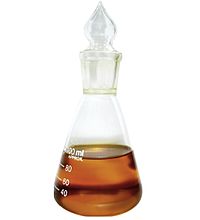
Photo from wikipedia
Abstract The purpose of this work was to investigate the viability of a microalgae catalytic pyrolysis/hydrotreating plant to kerosene, diesel and gasoline using Aspen Plus. A series of 2000 dry… Click to show full abstract
Abstract The purpose of this work was to investigate the viability of a microalgae catalytic pyrolysis/hydrotreating plant to kerosene, diesel and gasoline using Aspen Plus. A series of 2000 dry tonne per day scenarios were simulated with the final goal of determine the price in USD per litre of the drop-in fuels produced and the economic feasibility of the technique at a large-scale. Different scenarios (mechanical, solar and thermal drying), microalgae (Nannochloropsis and Isochrysis) and catalysts (Li-LSX zeolite, Ni-Ce/Al2O3, Ni-Ce/ZrO2). For this work, a systematic design approach by Douglas was considered and the whole process was actualised with the Marshall and Swift Cost Index of 2016. The lowest minimum fuel selling price (1.418 $/L) was found for Isochrysis and Li-LSX-zeolite. Finally, the sensitivity analysis showed that the bio-oil yield was the most influent factor, leading to a variation of the fuel price between 1.158 $/L to 1.751 $/L assuming a 20% of variation. The techno-economic assessment and sensitivity analysis indicated that Isochrysis and Li-LSX-zeolites are promising for the production of drop-in fuels, but further research is required to further reduce the price of the feedstock production and drying to be competitive with lignocellulosic materials.
Journal Title: Energy
Year Published: 2019
Link to full text (if available)
Share on Social Media: Sign Up to like & get
recommendations!